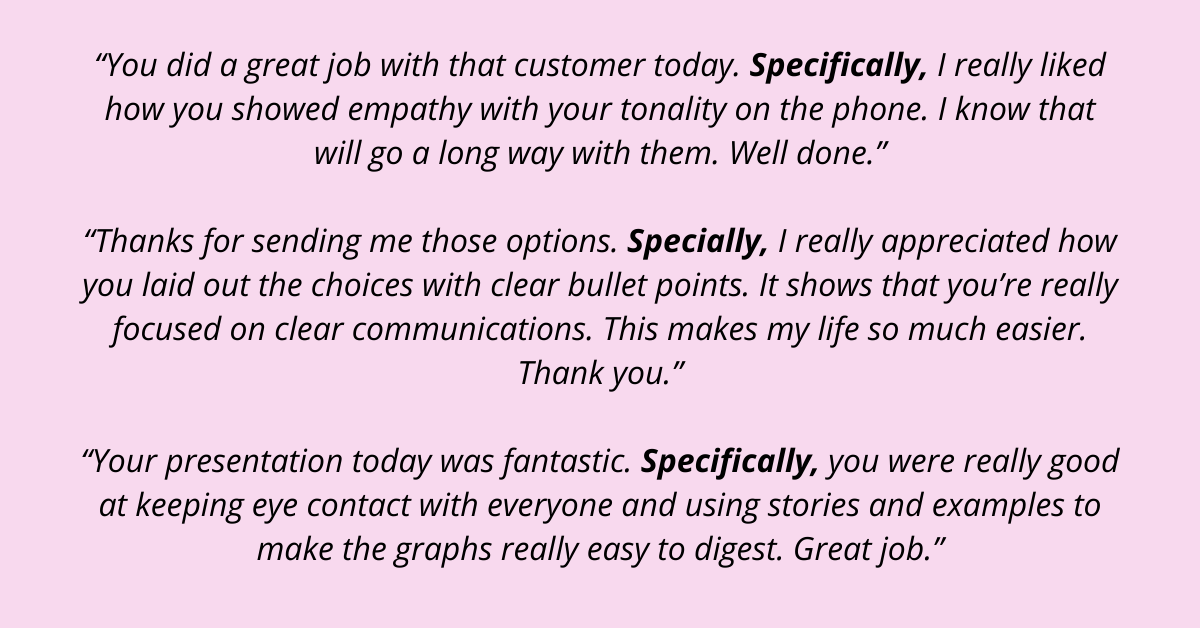Positive feedback can be motivating, uplifting, morale boosting and esteem building. But it can also be a practical tool for further developing skills, if you know how to do it correctly.
Most leaders, teachers, and trainers who give positive feedback or compliments, waste the opportunity to mold and embed preferred behaviours. Why? They simply don’t go far enough with their compliments. It’s one thing to hear that you’ve done a great job, and it’s another thing entirely to hear what specifically made it great. The more detailed you can be about what the person has done well, the easier it is for them to repeat those behaviours.
Think about it. If I’ve just handed you a report and you say, “Great job,” I don’t get a lot of clues as to what I have done that was so great (apart from the obvious fact of getting it done.) This means I am unable to focus on repeating the preferred behaviour and must guess why you thought it was a great job. Maybe it was great that I was so fast, so efficient, so persistent, so pedantic, so focused and the list goes on. I’ll never know if you don’t tell me.
How to Sow it to Grow it
If you want to cultivate more of that behaviour from me, you need to ‘sow it to grow it’ – sow the seeds, so I can grow the seeds. Make what I did well as explicit as possible, so I know what to repeat.
Here’s what it might look like in action:
The hardest thing about this technique, is just remembering to do it more often. Your job as a leader is to never leave the site of a good compliment without planting some seeds.
Remember if they don’t have the seeds to sow, they don’t know what behaviour to grow. You are the gardener of their greatness. Go forth and plant those seeds!


